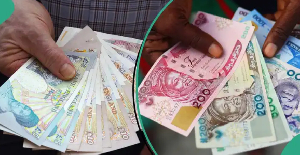A new report has predicted an estimated number of 11 million Nigerians will fall into poverty as a result of Covid-19 by 2020.
The report states that the category of Nigerians expected to fall into this line are a large share of urban dwellers who depend on service-sector, non-farm business income.
“Before the COVID-19 crisis, the poverty rate was forecast to remain virtually unchanged, with the number of poor people set to rise to 90.0 million by 2022 due to natural population growth. Yet the poverty rate is now forecast to rise to 45.2 per cent by 2022, with 100.9 million people living in poverty.”
The report was published by the World Bank under the Nigeria Development Update (NDU), which is a report series produced twice a year.
The NDU assesses recent economic and social developments and prospects in Nigeria and places these in a longer-term and global context.
According to the report titled, ‘Rising to the Challenge: Nigeria’s Covid-19 Response’, “Simulations suggest that 10.9 million Nigerians may fall into poverty due to the COVID-19 crisis, a large share of whom are set to be urban dwellers who depend on service-sector, non-farm business income. Before the COVID-19 crisis, the poverty rate was forecast to remain virtually unchanged, with the number of poor people set to rise to 90.0 million by 2022 due to natural population growth.
“While poverty has traditionally been concentrated among rural households dependent on agriculture, more than one-third of those falling into poverty due to the COVID-19 crisis are projected to be urban residents, around one-third are projected to live in households whose heads work in services, and almost half are projected to live in households whose heads work in nonfarm enterprises.
“Social protection program coverage has remained low during the COVID-19 crisis. Between mid-March and July 2020, just 4.9 per cent of households had received assistance in the form of cash from any institution—including the government—and 3.6 per cent had received in-kind (non-food) assistance. While food assistance was more common, having been received by 23 per cent of households over the same period, such transfers are more likely to be received by non-poor households.
“Innovative techniques are currently being explored to target poor and vulnerable Nigerian households in the wake of COVID-19. Given the pandemic’s disproportionate impact on urban areas, where pre-pandemic poverty rates were the lowest, it is vital to better understand emerging pockets of poverty in Nigeria’s towns and cities. To this end, a poverty map using satellite and other ‘big data’ sources has been produced to estimate poverty at the ward level in Nigeria.
“This new poverty map is being used to select urban wards for scaling up NASSP. By accelerating registration and rapid expansion both in rural and urban areas, it is expected that the NASSP cash transfers will be provided to about four million poor and vulnerable households (over 20 million people) across all of Nigeria’s states.”
Nigeria ranks among the top ten countries heavily affected by COVID-19 in Africa. Nigeria’s COVID-19 response focuses on strengthening laboratory systems and enhancing risk communication and surveillance.
The available indicators—such as the total number of deaths, the case fatality rate, and the total number of confirmed cases—show that Nigeria has fared reasonably well in responding to the COVID-19 pandemic despite a significant decline in the delivery of essential health services. Yet, COVID-19 has had a substantial negative impact on service delivery for both disease control programs and essential health care services.”
The Impact of COVID-19 on Education.
“In response to the pandemic, the government implemented multiple measures, both at the federal and state levels, including the adoption of a Contingency Plan to ensure that the school community was protected. The plan aimed to
ensure the continuation of education, provide safe water and hygiene facilities in schools, and train and sensitise the school community on preventive measures.
“During the school closures, Nigeria strived for learning continuity despite the abrupt closure, with distance learning reaching approximately 60 per cent of school children, a strong performance compared to other countries in the region. Nigeria will have to build on its efforts to mitigate the effects of COVID-19 on education and accelerate progress.
“States need to ensure that all kids go back to school under safe conditions. This will entail a rigorous identification of children that, after schools reopened, did not go back to school, and the development of targeted policies to bring them back and reduce dropout rates. Resources such as administrative data, the available phone surveys, and effective social mobilization would be important to identify not only children who did not return to school but also those at risk of dropping out.”
The policy recommendations suggested robust mitigation and recovery policies that would be based on five pillars.
“Managing the domestic spread of COVID-19 until a vaccine is distributed; Enhancing macroeconomic management to boost investor confidence; Safeguarding and mobilising revenues; Reprioritising public spending to protect critical development expenditures, and Supporting economic activity and access to services and providing relief for poor and vulnerable communities.”
General News of Wednesday, 16 December 2020
Source: today.ng













